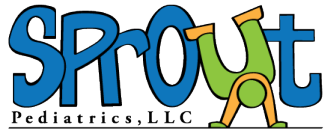If you are a parent or professional working with typically developing young children or children who are challenged, you have probably been introduced to the notion of using sign language with them. As a pediatric team of professionals, we find sign language to be the one of the most exciting skills children learn and grow from using. We use sign language with our late talkers, our children who have signs of Childhood Apraxia of Speech, Down Syndrome, Autism, and many other developmental and genetic disorders. Here are some do’s and don’t of using sign language with young children.
Do introduce sign language as a way to give them a way to communicate their wants and needs. Some of the first signs we teach are milk, cracker, more and cookie! We find both the Wee Hands Online Dictionary and the Lifeprint websites to be invaluable! If a client is frustrated or expressing an extreme desire for a given object, we can quickly plug in the word and see a picture or video of the sign. While the Wee Hands Dictionary is good for the most useful toddler and children’s signs, some of our children might love grapes and this sign hasn’t quite made it to the dictionary and the Lifeprint dictionary is more exhaustive.
Don’t teach words that aren’t useful or don’t mean anything to them. If you are interested in learning specific words from a local professional here in the Midlands of South Carolina, we recommend the Signing Time Instructor – Jill Eversmann. Click this link to learn more about the classes she offers!
Do hand over hand demonstrate how to sign a word. Take their hands and do it with them and then stand in front of them and sign it again so they can see you doing the sign. It might take you doing it with them 7-10 times before you see them attempt to do it but then again, if it’s a highly motivating food, we have seen boys sign “candy or cookie” after one demonstration!
Don’t think they won’t sign if you have been trying for several months and not getting any results. Toddler’s need to be sitting up independently and be able to bring hands to mid-line to do many signs, so if you begin before these motor skills are possible, you may frustrate yourself.
Do clap and praise them as they begin imitating and using the signs spontaneously! When toddlers begin using signs spontaneously, care givers and parents can begin expanding their vocabulary to words like: stop, mine, please, thank you and night night! These powerful words give them a voice in their day to day lives and parents often report seeing their toddlers less frustrated. If they do continue to pitch a fit or whine, encourage them to use their words. Model the sign for what they want and make them sign so they can begin to see the usefulness. If you had a typically developing 3 year old, you would not allow them to cry and whine but would expect them to talk to you. Expect no less from a child who can sign, just adjust the talking to signing.
Don’t put them on display and have them perform for grandparents and friends. Allow them to show what they know as they request and use it naturally.
Do verbally say the word you are signing and expecting your baby to sign. As your baby begins to sign more and more and develop a vocabulary of 15-20 words, you will begin to hear some verbal approximations for the words they use most often or hear most often. They may say “muh” for more or “bah” for ball. Some later word approximations might include “op” for stop, “peas” for please and “tan too” for thank you! One of the common questions we get is “Will they ever talk if we teach them signs?” Absolutely! Sign language is just a visual and kinesthetic way to help facilitate your baby’s language skills. Teaching your baby to sign won’t keep them from talking any more than teaching them to crawl will keep them from walking!
Don’t discourage signing or verbal approximations! Toddler’s and young children often do not have the motor skills to precisely sign or say words, but accept their effort and know that they will get better and more articulate.
Take a look at this video and watch this two year old girl with Down Syndrome show you all the signs she knows on command! It’s difficult to hear but she signs grapes, please, milk and stop!
[youtube http://www.youtube.com/watch?v=jYhqpixjEIQ&w=420&h=315]
A few other useful signs we encourage through therapy are: help, open, close, book, on, in, dog, bird and music!

